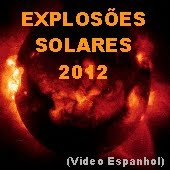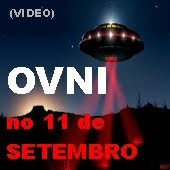Os Estados Unidos emitiram, esta quinta-feira, uma alerta de tsunami para a região do Pacífico Sul, em concreto para as Ilhas Salomão, Vanuatu e Nova Caledónia, após um sismo de magnitude 7,6.
15/04/10
AINDA TEM DÚVIDAS????
Como poderá ver neste blogue, todas a profecias aqui relatadas se têm vindo a confirmar.
Diariamente somos bombardeados com noticias de catástrofes naturais como chuvas fortes, deslizamentos de terras, furacões, tornados, e sobretudo Sismos de grande magnitude.
Se segue com atenção as noticias dos principais meios de comunicação, facilmente se aperceberá que diariamente ocorrem sismos uns de pequena outros de grande intensidade, assim como as já referidas intempéries, os tornados, os furacões, entre outros, fenómenos que não decorrem da manifestação da natureza mas sim de erros cometidos pelo homem nos últimos milhares de anos.
Hoje, para juntar a todos estas ocorrências, recebemos a noticia do grande vulcão na Islândia, e das consequências que daí advêm para a população e para a economia mundial.
Analisemos então os últimos 2 anos.
- Pré - Falência da economia Global ( crise económica )
- Sismos de grande Magnitude em varias partes do globo, fazendo milhares de mortos, de estragos e de prejuízos.
- Tsunamis
- Cheias
- Deslizamentos de terras subterrando milhares de pessoas
- Temperaturas altas súbitas em pleno inverno no hemisfério norte
- Quedas de aviões
- Falência da credibilidade das igrejas
- Escândalos da igreja católica
- e agora o Vulcão....
Tal como foi previsto nas profecias Maias e de Nostradamus, o que iria ocorrer entre 2009 e 2012.
Assim é a verdade, 2012 está cada vez mais próximo....
Ainda tem duvidas ????????????????????
Diariamente somos bombardeados com noticias de catástrofes naturais como chuvas fortes, deslizamentos de terras, furacões, tornados, e sobretudo Sismos de grande magnitude.
Se segue com atenção as noticias dos principais meios de comunicação, facilmente se aperceberá que diariamente ocorrem sismos uns de pequena outros de grande intensidade, assim como as já referidas intempéries, os tornados, os furacões, entre outros, fenómenos que não decorrem da manifestação da natureza mas sim de erros cometidos pelo homem nos últimos milhares de anos.
Hoje, para juntar a todos estas ocorrências, recebemos a noticia do grande vulcão na Islândia, e das consequências que daí advêm para a população e para a economia mundial.
Analisemos então os últimos 2 anos.
- Pré - Falência da economia Global ( crise económica )
- Sismos de grande Magnitude em varias partes do globo, fazendo milhares de mortos, de estragos e de prejuízos.
- Tsunamis
- Cheias
- Deslizamentos de terras subterrando milhares de pessoas
- Temperaturas altas súbitas em pleno inverno no hemisfério norte
- Quedas de aviões
- Falência da credibilidade das igrejas
- Escândalos da igreja católica
- e agora o Vulcão....
Tal como foi previsto nas profecias Maias e de Nostradamus, o que iria ocorrer entre 2009 e 2012.
Assim é a verdade, 2012 está cada vez mais próximo....
Ainda tem duvidas ????????????????????
Etiquetas:
O dia 21-12-2012,
Perguntas,
Profecias
VULCÃO NA ISLÂNDIA
(Reuters) - A huge ash cloud from an Icelandic volcano turned the skies of northern Europe into a no-fly zone on Thursday, stranding hundreds of thousands of passengers.
The European air safety organization said the disruption, the biggest seen in the region, could last another two days and a leading volcano expert said the ash could present intermittent problems to air traffic for 6 months if the eruption continued.
Even if the disruption is short lived, the financial impact on airlines could be significant, a consultant said. The International Air Transport Association had said only days ago airlines were slowly coming out of recession.
The volcano began erupting on Wednesday for the second time in a month from below the Eyjafjallajokull glacier. It hurled a plume of ash six to 11 kilometers (3.8 to 7 miles) into the atmosphere, and this spread south east overnight.
Volcanic ash contains tiny particles of glass and pulverized rock which can damage engines and airframes and an Icelandic volcanologist said on Thursday the eruption was growing more intense.
Britain barred flights in its air space, except in emergencies, until at least 0600 GMT on Friday, with a flight returning soldiers from Afghanistan having to be held in Cyprus.
It was the first time within living memory that a natural disaster had caused such a halt, a spokeswoman for Britain's National Air Traffic Service (NATS) said. Even after the September 11, 2001 attacks, Britain did not close its air space.
John Strickland, director of air transport consultancy JLS Consulting, saw possible broader hazards.
"Iceland sits right on one of the key routes between Europe and the USA and... depending on meteorological conditions it could also affect flights from Europe to Asia so there are two big international flows which could be affected by this."
FURTHER 48 HOURS
French authorities said they would close 24 airports across northern France before the end of Thursday, including in Paris. Brussels, Amsterdam and Geneva airports said they had canceled a large number of flights and Eurocontrol spokesman Brian Flynn said the problem could persist for a further 48 hours.
Finland closed all airports except Helsinki-Vantaa.
The Association of British Insurers said volcanic eruptions were not always covered by travel insurance for cancellation and delay. But some airlines issued statements confirming they would refund fares or change flights.
Airline staff at Stansted airport, north-east of London, told customers it could be closed until Sunday, said stranded passenger Andy Evans.
"People just don't know what to do," he said. "There are hundreds of people in the queues at the sales desks."
A spokesman at Heathrow, Europe's busiest airport, said 840 out of 1,250 flights on Thursday were affected, disrupting about 180,000 passengers. More than 120,000 other passengers were affected at Gatwick, Stansted and Glasgow airports.
"There is a big financial impact on the airlines," said Strickland of JLS consulting. "We are now looking at least a day's business wiped out for the airline business ... even if things were meteorologically fine to fly tomorrow by that time the airlines will have all their aircraft and crew out of position so they have no choice but to cancel further flights."
In 1982 a British Airways jumbo jet lost power in all its engines when it flew into an ash cloud over Indonesia, gliding toward the ground before it was able to restart its engines.
The incident prompted the aviation industry to rethink the way it prepared for ash clouds, resulting in international contingency plans activated on Thursday.
Scientists said the ash did not pose any health threat because it is at such a high altitude.
Bill McGuire, professor at the Aon Benfield UCL Hazard Research Center, said if the volcano continued erupting for more than 12 months, as it did the last time, periodic disruptions to air traffic could continue.
"The problem is volcanoes are very unpredictable and in this case we have only one eruption to go on," he said. "And a lot depends on the wind. I would expect this shutdown to last a couple of days. But if the eruption continues -- and continues to produce ash -- we could see repeated disruption over six months or so."
WIDESPREAD DISRUPTION
Brian Flynn, deputy head of operations at Eurocontrol, said the disruption was already unprecedented: "The extent is greater than we've ever seen before in the EU."
"The meteorological situation is such that the volcanic ash is progressing very slowly eastwards but there is not a lot of wind... so it is very slow and very dense."
Russian Prime Minister Vladimir Putin was forced to cancel a trip to Russia's Arctic town of Murmansk on Thursday. "The cloud has covered the entire region," said Putin's spokesman.
The eruption has grown more intense, University of Iceland volcanologist Armannn Hoskuldsson said.
To the east of the volcano, thousands of hectares of land were covered by a thick layer of ash, while a cloud was blotting out the sun in some areas along the southern coast of Iceland, local media reported.
(Reporting by London, Dublin, Paris, Oslo, Stockholm, Helsinki, Amsterdam, Brussels, Geneva and Copenhagen newsrooms, writing by Kylie MacLellan; editing by Philippa Fletcher)
The European air safety organization said the disruption, the biggest seen in the region, could last another two days and a leading volcano expert said the ash could present intermittent problems to air traffic for 6 months if the eruption continued.
Even if the disruption is short lived, the financial impact on airlines could be significant, a consultant said. The International Air Transport Association had said only days ago airlines were slowly coming out of recession.
The volcano began erupting on Wednesday for the second time in a month from below the Eyjafjallajokull glacier. It hurled a plume of ash six to 11 kilometers (3.8 to 7 miles) into the atmosphere, and this spread south east overnight.
Volcanic ash contains tiny particles of glass and pulverized rock which can damage engines and airframes and an Icelandic volcanologist said on Thursday the eruption was growing more intense.
Britain barred flights in its air space, except in emergencies, until at least 0600 GMT on Friday, with a flight returning soldiers from Afghanistan having to be held in Cyprus.
It was the first time within living memory that a natural disaster had caused such a halt, a spokeswoman for Britain's National Air Traffic Service (NATS) said. Even after the September 11, 2001 attacks, Britain did not close its air space.
John Strickland, director of air transport consultancy JLS Consulting, saw possible broader hazards.
"Iceland sits right on one of the key routes between Europe and the USA and... depending on meteorological conditions it could also affect flights from Europe to Asia so there are two big international flows which could be affected by this."
FURTHER 48 HOURS
French authorities said they would close 24 airports across northern France before the end of Thursday, including in Paris. Brussels, Amsterdam and Geneva airports said they had canceled a large number of flights and Eurocontrol spokesman Brian Flynn said the problem could persist for a further 48 hours.
Finland closed all airports except Helsinki-Vantaa.
The Association of British Insurers said volcanic eruptions were not always covered by travel insurance for cancellation and delay. But some airlines issued statements confirming they would refund fares or change flights.
Airline staff at Stansted airport, north-east of London, told customers it could be closed until Sunday, said stranded passenger Andy Evans.
"People just don't know what to do," he said. "There are hundreds of people in the queues at the sales desks."
A spokesman at Heathrow, Europe's busiest airport, said 840 out of 1,250 flights on Thursday were affected, disrupting about 180,000 passengers. More than 120,000 other passengers were affected at Gatwick, Stansted and Glasgow airports.
"There is a big financial impact on the airlines," said Strickland of JLS consulting. "We are now looking at least a day's business wiped out for the airline business ... even if things were meteorologically fine to fly tomorrow by that time the airlines will have all their aircraft and crew out of position so they have no choice but to cancel further flights."
In 1982 a British Airways jumbo jet lost power in all its engines when it flew into an ash cloud over Indonesia, gliding toward the ground before it was able to restart its engines.
The incident prompted the aviation industry to rethink the way it prepared for ash clouds, resulting in international contingency plans activated on Thursday.
Scientists said the ash did not pose any health threat because it is at such a high altitude.
Bill McGuire, professor at the Aon Benfield UCL Hazard Research Center, said if the volcano continued erupting for more than 12 months, as it did the last time, periodic disruptions to air traffic could continue.
"The problem is volcanoes are very unpredictable and in this case we have only one eruption to go on," he said. "And a lot depends on the wind. I would expect this shutdown to last a couple of days. But if the eruption continues -- and continues to produce ash -- we could see repeated disruption over six months or so."
WIDESPREAD DISRUPTION
Brian Flynn, deputy head of operations at Eurocontrol, said the disruption was already unprecedented: "The extent is greater than we've ever seen before in the EU."
"The meteorological situation is such that the volcanic ash is progressing very slowly eastwards but there is not a lot of wind... so it is very slow and very dense."
Russian Prime Minister Vladimir Putin was forced to cancel a trip to Russia's Arctic town of Murmansk on Thursday. "The cloud has covered the entire region," said Putin's spokesman.
The eruption has grown more intense, University of Iceland volcanologist Armannn Hoskuldsson said.
To the east of the volcano, thousands of hectares of land were covered by a thick layer of ash, while a cloud was blotting out the sun in some areas along the southern coast of Iceland, local media reported.
(Reporting by London, Dublin, Paris, Oslo, Stockholm, Helsinki, Amsterdam, Brussels, Geneva and Copenhagen newsrooms, writing by Kylie MacLellan; editing by Philippa Fletcher)
02/03/10
INFORMAÇÃO NASA
A 27 de fevereiro de magnitude 8,8 terremoto no Chile pode ter reduzido o tamanho de cada dia da Terra.
O Cientista Richard Gross da Investigação JPL mostrou como a rotação da Terra deverá ter mudado, como resultado do terremoto de 27 de Fevereiro. Usando um complexo modelo, ele e os colegas cientistas vieram a público com um cálculo preliminar, que o terremoto deve ter encurtado a duração de um dia na Terra por cerca de 1,26 microssegundos (um microssegundo é a milionésima parte de um segundo).
Talvez o mais impressionante é o quanto o terremoto deslocou o eixo da Terra.
O Cientista Richard Gross da Investigação JPL mostrou como a rotação da Terra deverá ter mudado, como resultado do terremoto de 27 de Fevereiro. Usando um complexo modelo, ele e os colegas cientistas vieram a público com um cálculo preliminar, que o terremoto deve ter encurtado a duração de um dia na Terra por cerca de 1,26 microssegundos (um microssegundo é a milionésima parte de um segundo).
Talvez o mais impressionante é o quanto o terremoto deslocou o eixo da Terra.
Gross calcula que o terremoto deve ter movido o eixo da Terra (figura o eixo sobre o qual a massa da Terra é equilibrada) por 2,7 milisegundos (cerca de 8 centímetros, ou 3 polegadas).
O Valor do Eixo da Terra não é o mesmo que o seu eixo norte-sul, que são compensados por cerca de 10 metros (cerca de 33 pés).
Por comparação, Gross disse que o mesmo modelo estimou a magnitude do terremoto de Sumatra 2004 9,1 deveria ter reduzido a duração do dia de 6,8 microsegundos e deslocado do eixo da Terra em 2,32 milisegundos (cerca de 7 centímetros, ou 2,76 polegadas).
Gross disse que, apesar do terremoto chileno ser muito menor do que o terremoto de Sumatra, prevê-se ter alterado a posição do eixo de figura por um pouco mais, por dois motivos. Primeiro, ao contrário do terremoto de Sumatra de 2004, que foi localizado perto do equador, o terremoto de 2010 chileno foi localizado no meio da latitude - terra , o que torna mais eficaz na mudança do eixo da Terra.
Por comparação, Gross disse que o mesmo modelo estimou a magnitude do terremoto de Sumatra 2004 9,1 deveria ter reduzido a duração do dia de 6,8 microsegundos e deslocado do eixo da Terra em 2,32 milisegundos (cerca de 7 centímetros, ou 2,76 polegadas).
Gross disse que, apesar do terremoto chileno ser muito menor do que o terremoto de Sumatra, prevê-se ter alterado a posição do eixo de figura por um pouco mais, por dois motivos. Primeiro, ao contrário do terremoto de Sumatra de 2004, que foi localizado perto do equador, o terremoto de 2010 chileno foi localizado no meio da latitude - terra , o que torna mais eficaz na mudança do eixo da Terra.
Em segundo lugar, a massa responsável pelo terremoto de 2010 no Chile mergulhou a Terra num ângulo ligeiramente mais acentuado do que a massa responsável pelo terremoto de Sumatra 2004.
Isso faz com que a massa do Chile é mais eficaz nos que se deslocam verticalmente a massa da Terra e, portanto, mais eficaz na mudança do eixo da Terra em figura.
in "NASA oficial site"
Traduzido para Portugûes por Google- Tradutor
27/02/10
Mais dois sismos nas últimas 24 horas
Segundo as última informações, dois terremotos de grande magnitude atingiram nas últimas 24 horas a costa do Chile (mag 8.8) e a costa do Japão (mag 6.4)
Os cientistas disseram que será provável ocorrer durante os próximos dias mais algumas réplicas do terremoto.
O Chile e algumas ilhas do Pacifico estão em alerta vermelho, com risco de tsunami
Aguardamos mais desenvolvimentos a qualquer momento...
Subscrever:
Mensagens (Atom)





























